Specialized S-Works Tarmac SL7 Dura-Ace Di2 review
The Specialized Tarmac is an iconic bike, and the latest update from the American brand has futureproofed it
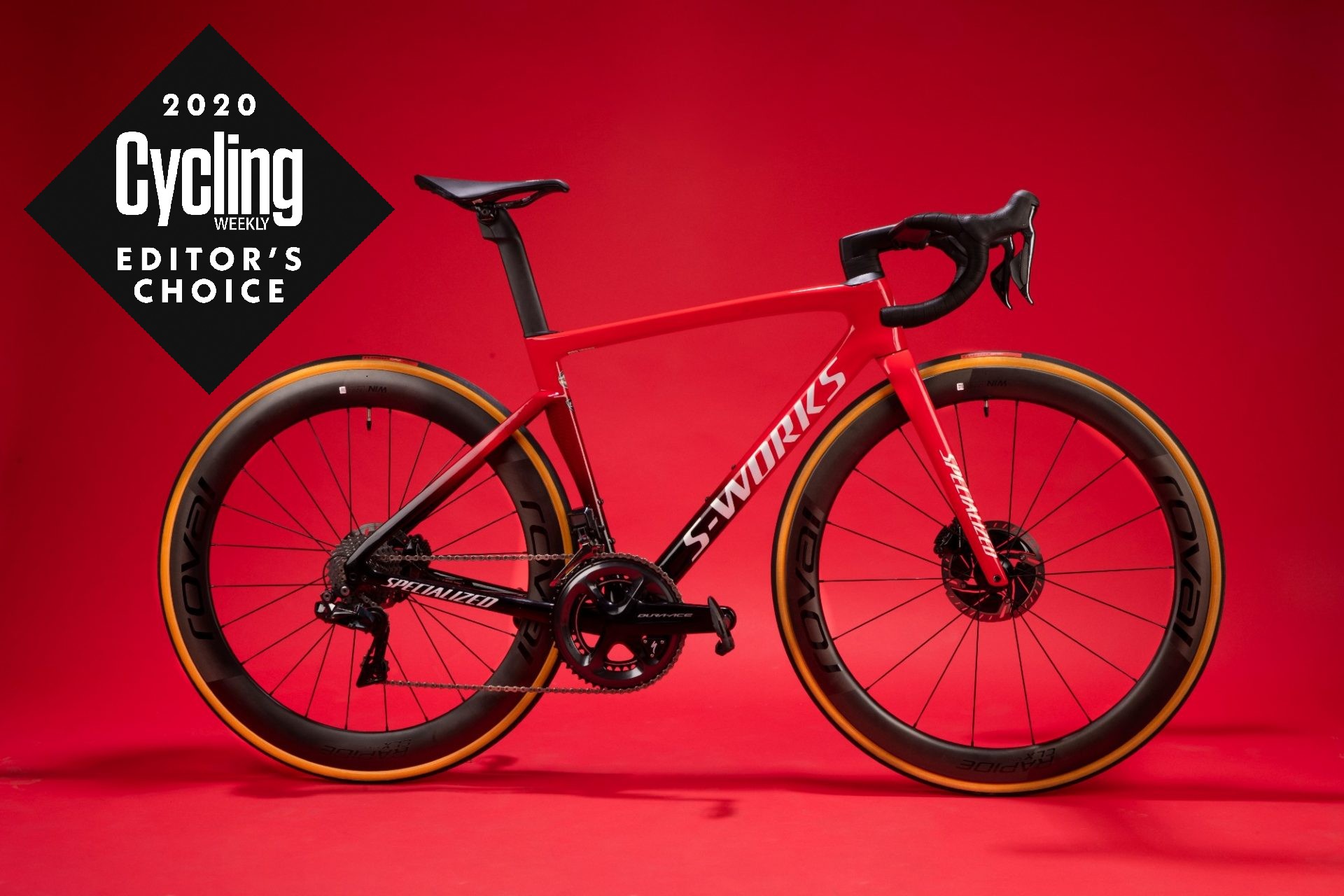
The new Tarmac SL7 is faster than the SL6 it replaces, with absolutely minimal weight penalty. The excellent handling and responsiveness of the Tarmac lives on, though there's a new stiffness in the latest model which won't suit everyone. However, after over 500km aboard this bike, the more I ride it, the more I love it - and if you're after speed over cushioning this could be the bike for you.
-
+
Aero
-
+
Light
-
+
Punchy
-
+
Great handling
-
-
More clattery than the SL6
-
-
Price tag
You can trust Cycling Weekly.

The Specialized S-Works Tarmac SL7 Dura-Ace Di2 was selected for an Editor's Choice award in 2020. This year's list contains 78 items which scored a 9 or 10/10 with our tech team - this gear is the best of the best, and has received the Cycling Weekly stamp of approval.
We must point out that at time of review, the S-Works Tarmac SL7 was £10,500 - the price was increased to £11,500 after review, scoring reflects the original price.
The Specialized Tarmac has long topped my list when it comes to the best 'all-round race bike'. I've recommended it to countless club mates and friends. It's always been a responsive and quick-handling machine and in my opinion, the Tarmac SL6 perfectly hit the compliance/stiffness balance jackpot. But this isn't a review of the Tarmac SL6. Enter: the Tarmac SL7.
In the Cycling Weekly office, we've nicknamed this bike the 'Varmac' - because it's very much an amalgamated child of the longstanding Tarmac and the 2011 introduced Venge aero road bike.
It comes as a response to the way the Venge has been gradually encroaching upon the Tarmac's well-established borders. Rather than let the Venge erode away at the relevance of its older sibling, Specialized has taken the key aero learnings of the Venge and transposed them to the Tarmac in this SL7 model.
Aero treatment
To bring the Tarmac up to date with current trends, Specialized gave it an aero facelift, optimising the seatstays, forks, seatpost and cockpit. This model also comes with the 51/60mm Secialized Roval Rapide CLX wheels which no doubt have an impact.
>>> Tarmac SL7 launched: all you need to know
The aero features mean more integration, which can be problematic - but I had no issues with the Tarmac SL7. The seatpost clamp is hidden beneath a rubber cover, but is easy to access with an Allen key or torque wrench.
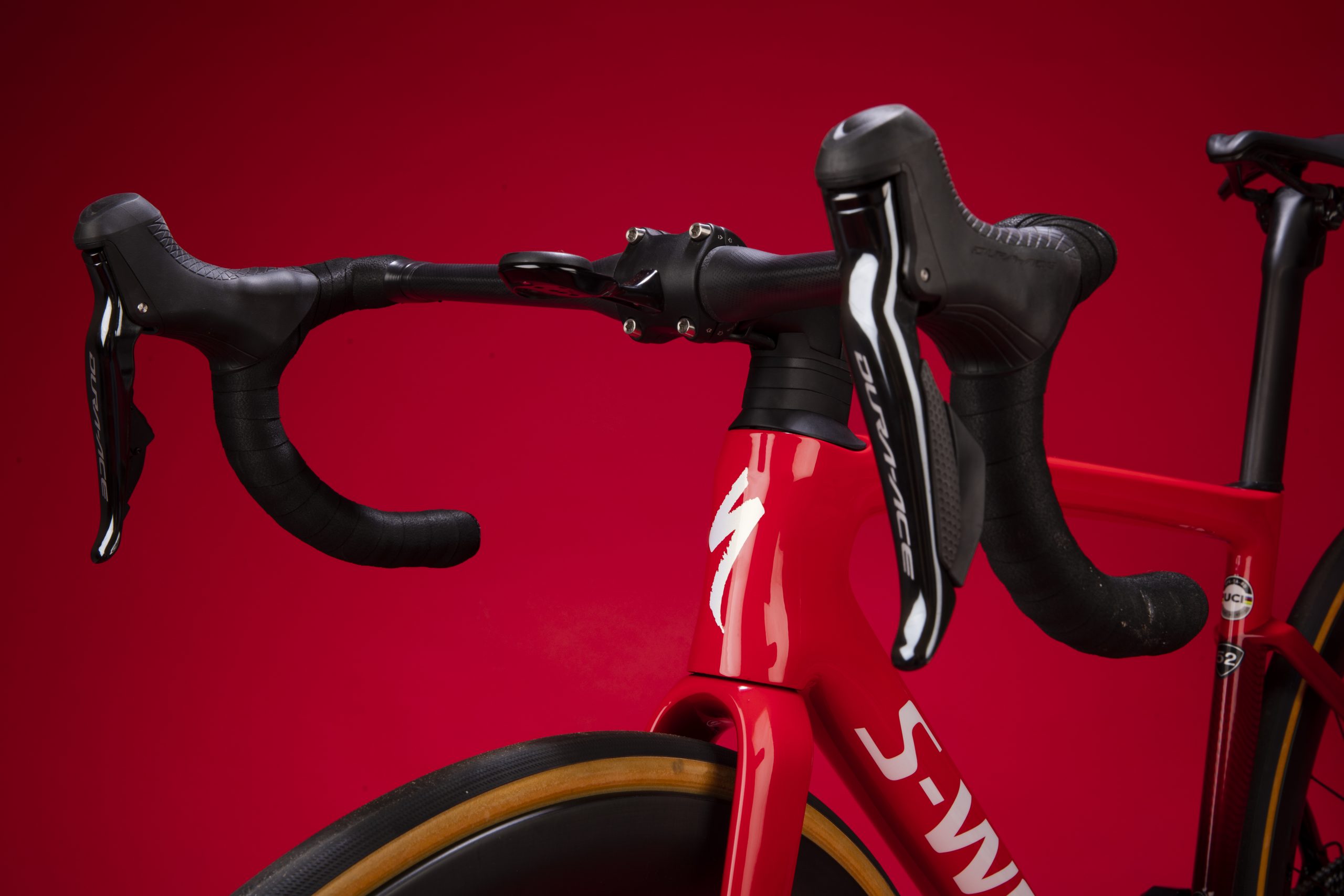
The cockpit looks seamless but you still have a bar/stem duo. The headset adjustment is nestled below a top cap which flips off easily when pushed, though the spacers aren't split, so you do have to chop the steerer if you want to drop the stack at all.
My size 52 model came with 40cm bars. That's 2-4cm wider than my ideal 36-38cm bar preference, and it's worth checking if your dealer will swap these free of charge should you want an alternative width.
Few changes in weight and geometry
The general consensus among the cycling focused physicists of the world is that saving watts via aerodynamics is much more effective than via a drop in weight on all but the steepest climbs. In any event, with the UCI weight limit stuck stubbornly at 6.8kg, those making bikes for pro racers have little need to search for more grams to drop.
In taking on characteristics from the Venge, the SL7 has got a fraction heavier - the frame weight edging from 733g to 800g for a size 56 in the top end 'Fact 12R' carbon use for the S-Works model. My size 52, wearing Shimano Dura-Ace Di2 dropped onto the Cycling Weekly scales at 6.6kg, which is lightweight enough for me.

The geometry has also seen little change, my size 52 came with a stack/reach of 517/383mm, a 975mm wheelbase and 72.5º headingle with a -6º stem angle. This is a racing bike, which has always offered an aggressive without being excessive geometry, so maintaining this seems like a good move to me, no complaints there.
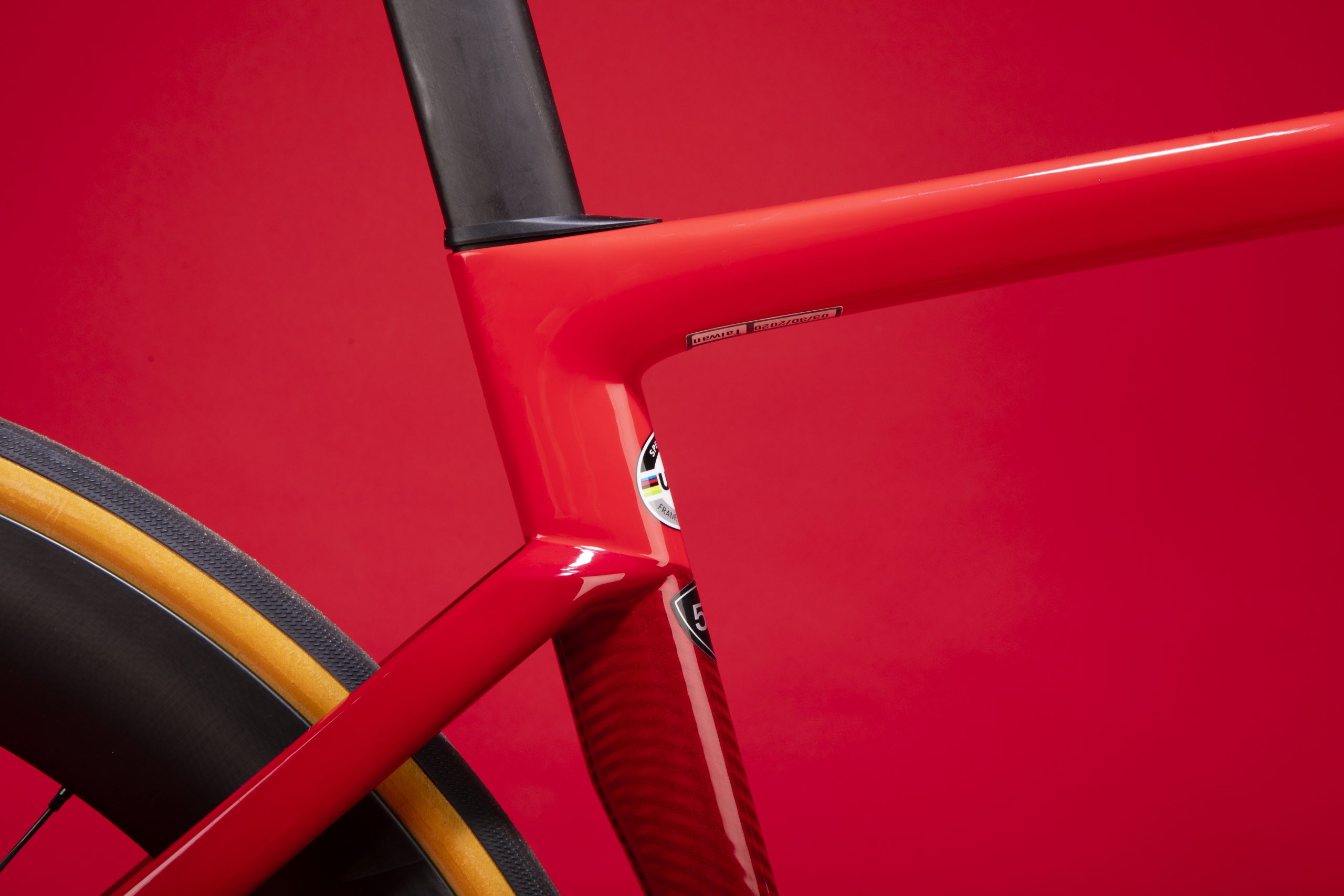
Specialized also says that its pro riders requested more rear end stiffness in the new SL7 - reportedly stating that the SL6 was mismatched in having a firm front end with a little too much compliance at the rear. The brand, therefore, made the back end of the bike stiffer - this combined with the deep wheels, aero carbon handlebars and aero profile seatpost all add up to a change in ride quality vs the outgoing model.
The spec
This is the top-end model within the Tarmac line up, though it does have a SRAM Red eTAP AXS sibling for the same price. Personally, I'd preference the eTap model since Shimano's flagship groupset is due an update really and eTap gives you wireless, 12-speed shifting.
This model comes with a matching power meter, as does the SRAM equipped equivalent. That's very much an expectation among the top-tier bikes now, and for £11,500 (£10,500 at time of review) you're quite right in expecting such additions.
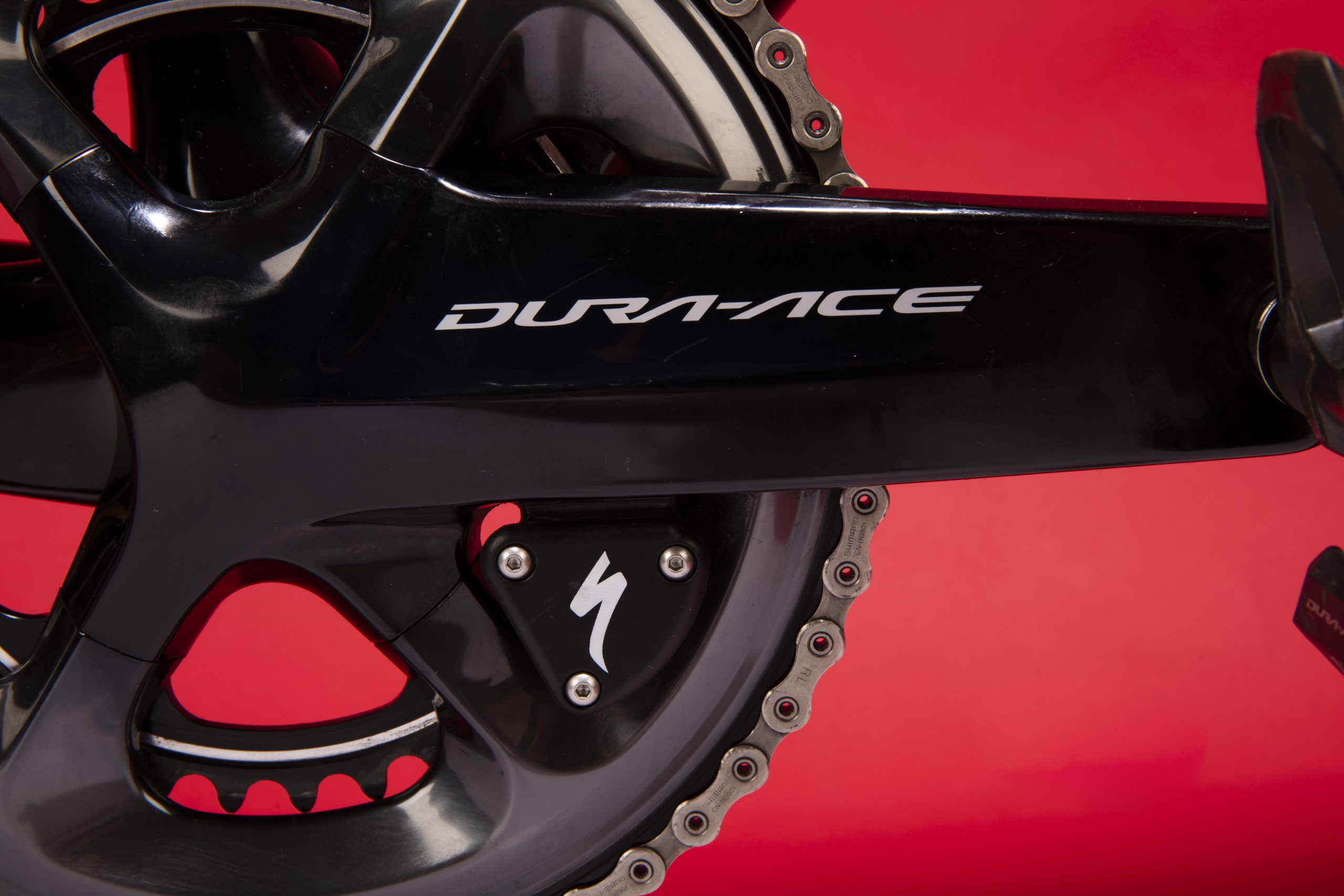
This model also comes with Roval Rapide CLX hoops, featuring a 60mm rear and 51mm front rim, with mismatched profiles. The front is significantly chunkier, reportedly fairing better aerodynamically as a result. During testing, I actually swapped on the Alpinist 33mm hoops, preferring the more sprightly ride on offer with these - but wheel choice will, as ever, come down to personal preference.
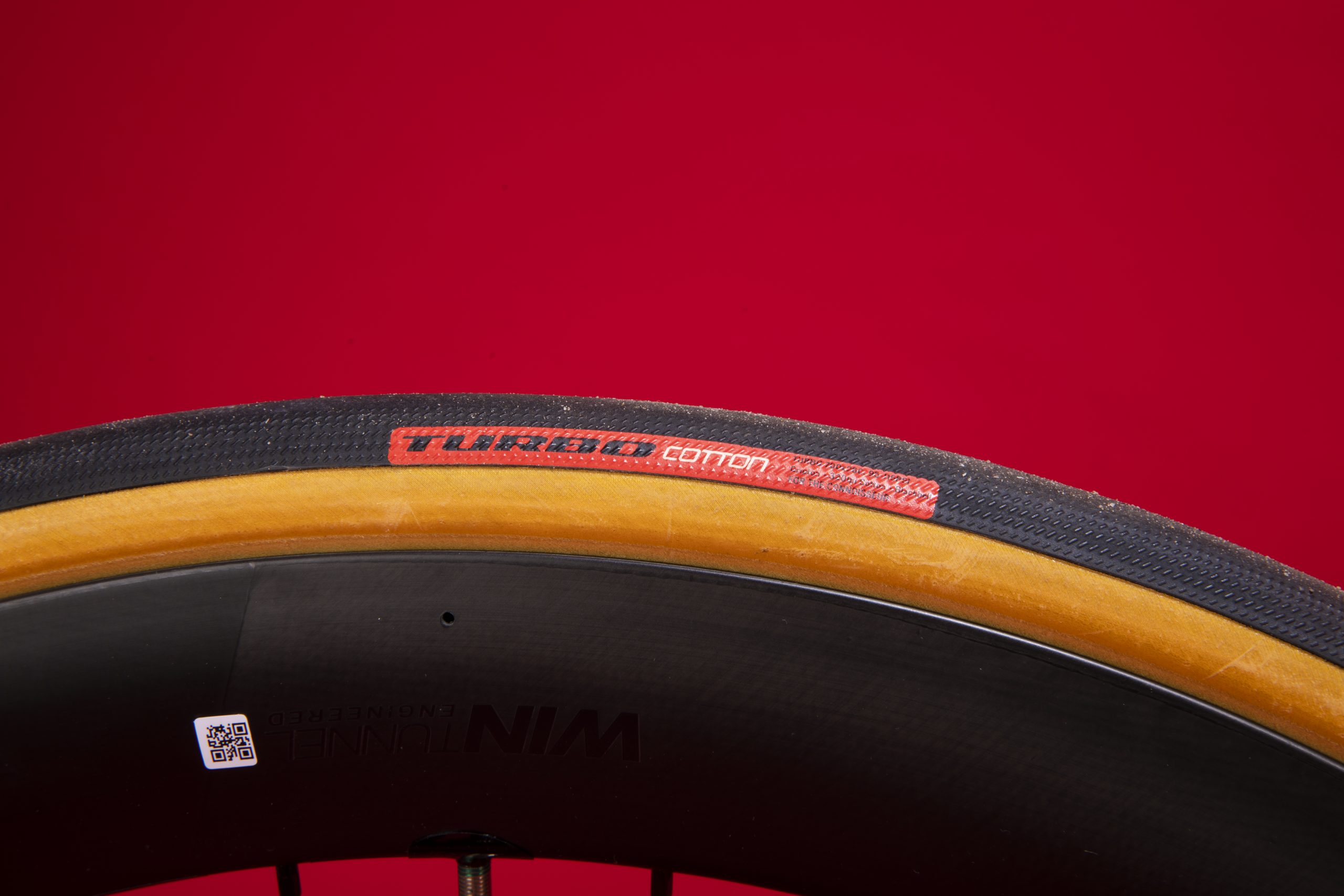
The wheels and 26mm S-Works Turbo Cotton tyres are not tubeless compatible, which is a bit odd. There is space for 32mm tyres, though - which futureproofs the Tarmac for a good few years as rubber continues to expand.
The ride
In most cases, first impressions of a bike change very little after more time spent aboard. The Tarmac SL7 was different. It surprised me from the first ride, and initially not in the best way.
Where I had felt the SL6 perfectly straddled the boundaries between stiffness and compliance, this new model rendered a much harsher ride quality and that was unexpected. This is a trend we've seen in many new releases this year - a lot of GC bikes have been taking on notes from their aero brethren (see the TCR, Teammachine and Émonda) and the trade-off is very often a loss in compliance as tube profiles increase.
This has jarred with me several times, because my inclination is always towards the traditional round tubed lightweight bikes: I prefer an Ultimate to an Aeroad, an Émonda to a Madone, and I preferred the Tarmac over the Venge.
However, after having spent upwards of 500km on the Tarmac, I'm happy to report that once the surprise and comparisons to the SL6 had dissipated, my fondness for the SL7 grew exponentially, and it hasn't stopped growing.
The SL6 was a 'do it all' race bike that I'd recommend for anyone. The SL7 is very different - it's a rapid racer offering a firm ride quality that will suit those looking for speed above all else. There's no doubt in my mind that the aero upgrades have made the Tarmac faster, but they've also made it stiffer and less accessible to those looking for comfort alongside speed. A lot of this I believe comes down to the wheelset specced, and also the naked top of the flattened carbon bars.
Whilst the Tarmac SL7 is a little more clattery than I'd like, it's consistent - there are no sudden jarring responses as the road surface changes. The more I've ridden it, the more I've enjoyed it. If your primary concern is going fast, I'd wholeheartedly recommend it.
Pitting this bike against the clock, I decided to test it on my local sporting time trial course. It's a course I've only ever raced on a time trial bike, but on the SL7 I beat my personal best of 30.17 by 47 seconds - enough to take the QOM off my team mate who has held it since 2017.
Granted, my own PB was set three years ago and I've tuned my own engine in that time too - but there's no denying that this bike is fast. A lot of the time I was able to make up versus the TT bike was on the descents and climbs, where the Tarmac absolutely excels due to its excellent front end handling and responsive rear end.
I also had the chance to take the Tarmac up Somerset's 5km Cheddar Gorge climb. This represented an excellent testing ground since the opening 2km are steep and favour the Tarmac of old whilst the final 3km become shallower - giving the Venge qualities a chance to shine. Despite an utterly enraging tourist traffic-induced 17-second stop, I still surpassed expectation, taking the crown from within the Cycling Weekly office and coming in 77 seconds (60 seconds without the stop!) off the QOM, in 26th of 3,774 riders.
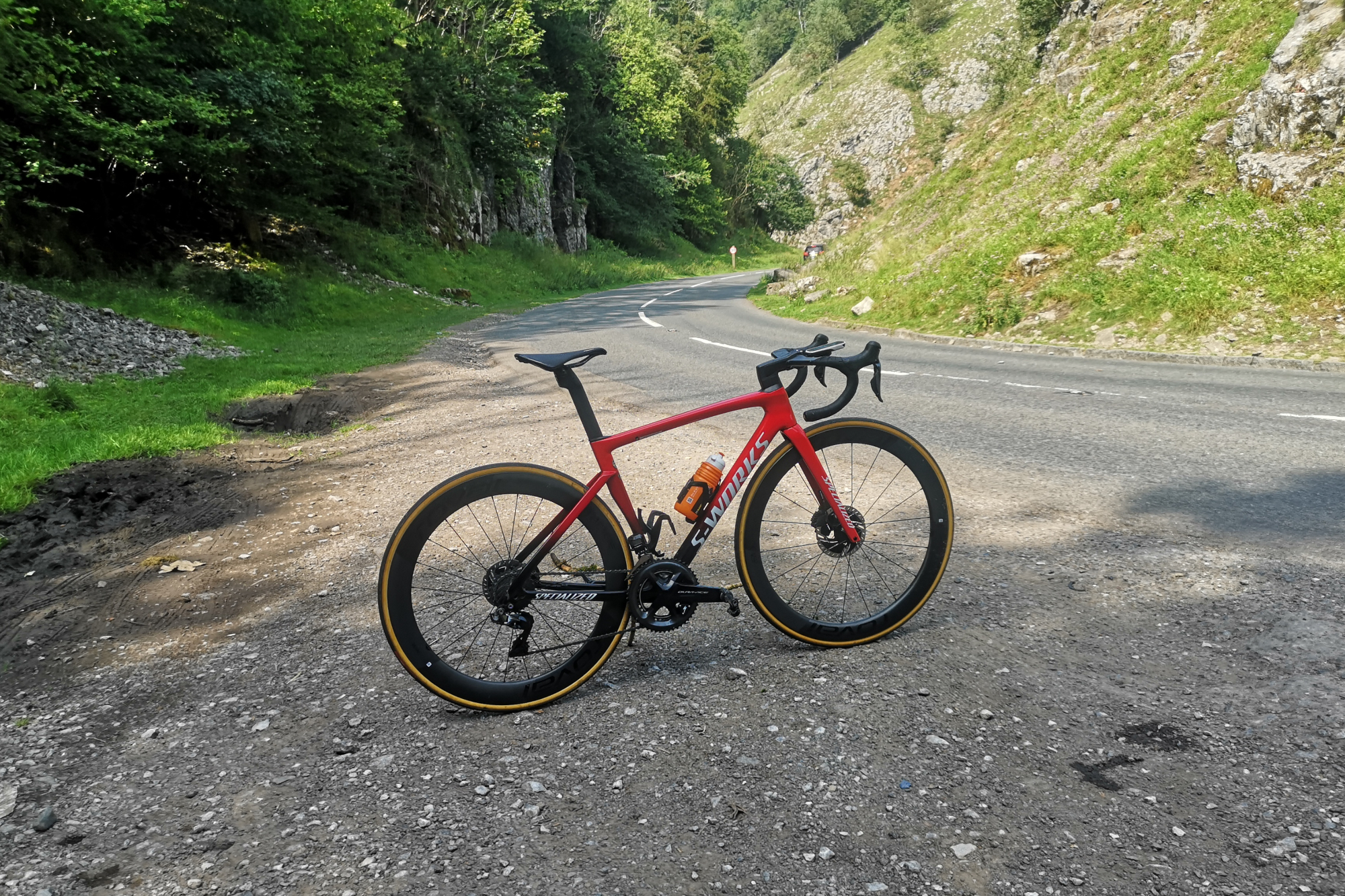
So far, I've raced (myself) on the Tarmac, I've joined 150km club runs on it and I've taken it out for a few relaxed dawdles on my own. If I were to spec this bike for myself, I'd swap the 50/61mm Roval Rapide CLX wheels for the shallower Alpenist pair day-to-day (keeping the deep pair for race day, of course), and though I like the flat top of the aero bars when climbing, I'd prefer a rounder bar with a bit more bar tape just to dampen out some of the buzz and clatter at the front end. I might lose a few watts there, but I reckon I'd get them back in opting for a narrower 36cm bar, anyway. With those changes made, I reckon the Tarmac SL7 would be just about a perfect 10/10.
Value
The outgoing S-Works SL6, with Shimano Dura-Ace, S-Works Power Cranks and Roval Rapide CLX50 disc wheels came in at £9,499. This model is £1,000 more expensive (later increased to £2,000 more), so it's fair to say that price has been hiked beyond inflation. There's no obvious reason why. As with all top-end bikes, once you get beyond the realm of £5,000, you've entered the territory of diminishing returns - the bike is not going to be 'twice as good' - but it does have S-Works on the down tube, and you can't put a price on happiness.

Thank you for reading 20 articles this month* Join now for unlimited access
Enjoy your first month for just £1 / $1 / €1
*Read 5 free articles per month without a subscription

Join now for unlimited access
Try first month for just £1 / $1 / €1
Get The Leadout Newsletter
The latest race content, interviews, features, reviews and expert buying guides, direct to your inbox!
Michelle Arthurs-Brennan the Editor of Cycling Weekly website. An NCTJ qualified traditional journalist by trade, Michelle began her career working for local newspapers. She's worked within the cycling industry since 2012, and joined the Cycling Weekly team in 2017, having previously been Editor at Total Women's Cycling. Prior to welcoming her first daughter in 2022, Michelle raced on the road, track, and in time trials, and still rides as much as she can - albeit a fair proportion indoors, for now.
Michelle is on maternity leave from April 2025 until spring 2026.
-
 'This is the marriage venue, no?': how one rider ran the whole gamut of hallucinations in a single race
'This is the marriage venue, no?': how one rider ran the whole gamut of hallucinations in a single raceKabir Rachure's first RAAM was a crazy experience in more ways than one, he tells Cycling Weekly's Going Long podcast
By James Shrubsall Published
-
 Full Tour of Britain Women route announced, taking place from North Yorkshire to Glasgow
Full Tour of Britain Women route announced, taking place from North Yorkshire to GlasgowBritish Cycling's Women's WorldTour four-stage race will take place in northern England and Scotland
By Tom Thewlis Published
-
 Positive signs for UK bike industry as Halfords cycling sales grow
Positive signs for UK bike industry as Halfords cycling sales growRetailer admits that the impact of Donald Trump's tariffs remains to be seen
By Tom Thewlis Published